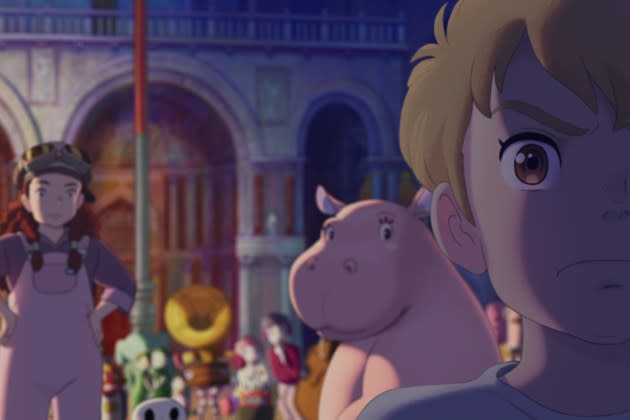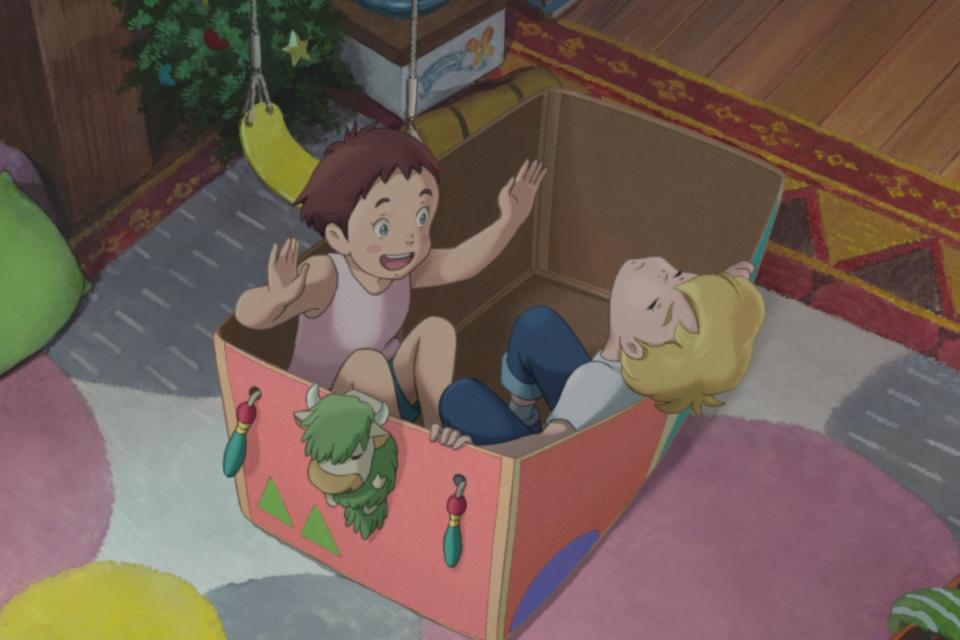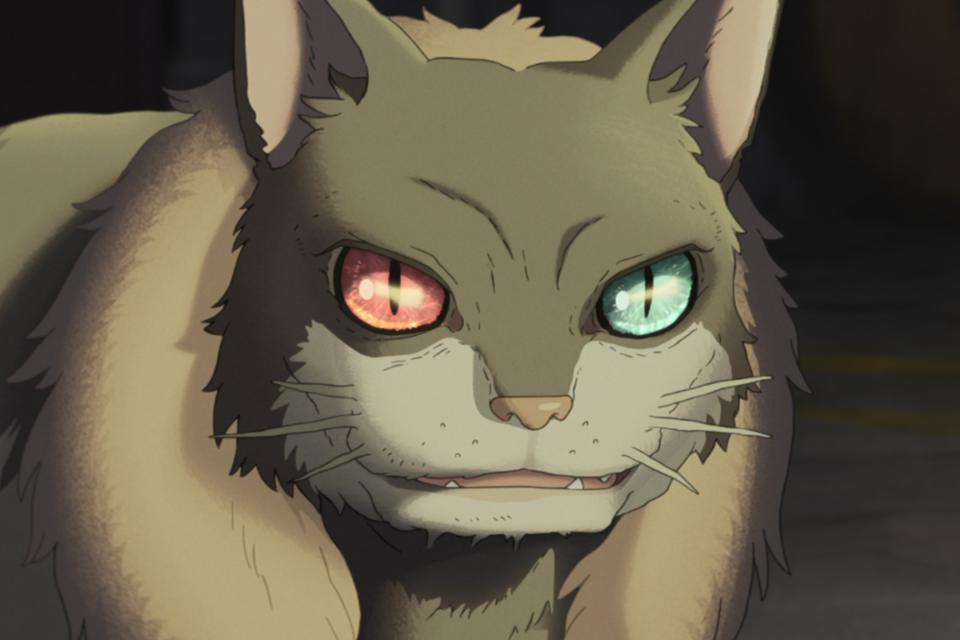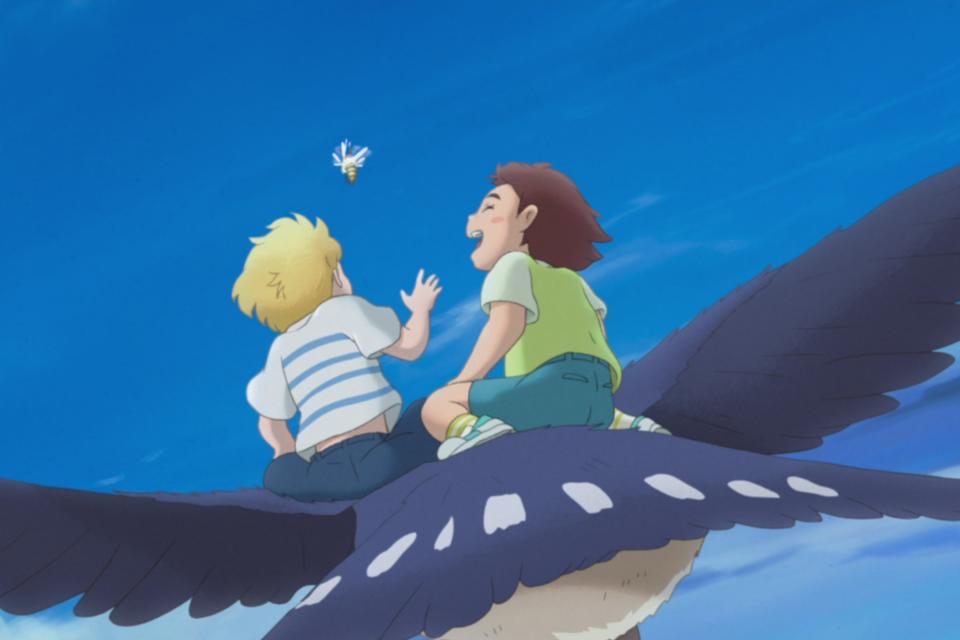Ghibli Alum Yoshiaki Nishimura Shares New Trailer for ‘The Imaginary,’ Explains Wider Vision Behind Studio Ponoc

Hitting Netflix on July 5, the animated odyssey “The Imaginary” follows a young girl and her invisible best friend, beginning in an attic where grieving Amanda hatches fantasy yarns with her fictive pal Rudger, before spanning out across no shortage of magical lands.
The hand-drawn gem marks the second feature produced by Japan’s Studio Ponoc – an outfit founded and staffed by veterans of Studio Ghibli. Among them are the film’s director Yoshiyuki Momose and producer/screenwriter/Ponoc founder Yoshiaki Nishimura, who spoke with Variety at the Annecy Animation Festival, where “The Imaginary” is screening in competition.
More from Variety
How did your background and professional experience shape your vision for Studio Ponoc?
Originally, I studied live-action filmmaking in the US. But I was drawn by the universal power of animation, seeing how one film could resonate. Regardless of language and nationality, children all around the world could enjoy the same piece of animation, and I thought that really quite powerful. I still genuinely believe that a single film can speak to a whole generation and keep on reverberating for 10 to 20 years.
I started at Studio Ghibli’s marketing department, until one day, really out of the blue, [Ghibli co-founder] Toshio Suzuki told me that I’d be making a film with Isao Takahata. I’m sure this is very different to the American model, but at first I’d spend more than 12 hours with Isao Takahata every single day, again and again, over a period of four to five years. And that process eventually resulted in a feature. Doing so taught me how to create something from scratch, because the process was very much meant to explore and combine our daily lives with our thoughts and ideas. That was a great learning curve, and I still work the same way now.
What thoughts and ideas fed into this film?
A lot of the studio employees have children, and I myself have children, so they’re always on my mind. I constantly wonder what they might be thinking at any moment’s time. What struggles are they confronting, what situations might they face, and how do they see things? The world has changed so much in the 20 years since I started making films, and in the 40 years since my own childhood. So I ask myself, what will they have to overcome? What do I wish for them?

Those questions are rather fundamental to the studio itself.
Studio Ponoc primarily creates films for kids. Japan, as you may know, has a declining population with significantly more adults. As result, so many animation studios have made a shift to target that wider audience. This is the major difference between the two markets, because much of the animation produced in the West tends to be for children, while that isn’t as much the case in Japan. In a way, that puts Studio Ponoc out of the mainstream, and that’s also what motivates us. We want children to see our films as treasure to enjoy. We want children to trust in Studio Ponoc, knowing that we make films for them. We think of ourselves a bit like Rudger – we’re like an imaginary friend and an ally for a struggling child.
What drew you to adapt an English book?
The concept of the imaginary friend is not really prevalent Japanese society, so I really had to search for a story that explored that idea. At the same time, the national origin wasn’t a big deal. I’m always reading stories from the United States, Japan, Germany, and Korean without thinking about where they’re from – I read them all in Japanese, of course, but still. I came across this book by chance, really, and the fact that it was British didn’t really hold too much significance. It could have just as easily taken place in Poland or Portugal or Spain; I only cared that it embodies the ideas that I had in mind.
How did the book inspire your own creative process?
The book makes mention of so many different locations, sometimes just in passing, or as a one-liner, or with a small illustration by Emily Gravett. Reading it fired up my own imagination, and definitely wanted to retain that. Adults watch and analyze through our adult brains, while children’s minds work completely differently. I wanted to capture that lack of coherent logic. Children’s imaginations are more scattered, nonsensical; they can fly off everywhere and anywhere, sometimes to Venice and then off into outer space. That’s also why I situated the film in Japan – not because I wanted to showcase the country or anything, just that some kids dream about Japan! The narrative didn’t need to follow a straight and logical line.

You applied those same flights of fancy to the film’s style.
I feel like the modern animation industry has hit a wall. Films from studios like Pixar and Warner Brothers all look amazing, but they also look pretty similar in a way. We might have reached a saturation point, whereas there are still many other styles to explore, and that’s true across the world. The entire industry needs to respond to his challenge. For example, traditional Japanese anime really functioned with a very set style with a fixed background and all that. But Isao Takahata always tried to push beyond those traditional forms. He always looked for something new, and I’ve tried to apply those questions to my own creative process.
I discovered this French technique of light and shadow texture when working on “The Imaginary.” I immediately knew we had to use it for the film, even though we were already halfway through production! I knew it would push our style forward, offering something different and enriching the creative process. I always ask my filmmakers to about how they can make each production different, encouraging them to run toward challenges.
The word ‘Ponoc’ translates to ‘midnight’ – it could evoke continuity or change. Which one better applies to Ghibli?
Studio Ghibli is part of my history; I could never run from it, and fully embrace it. Ghibli was driven by shared belief in positive change; everyone who worked there genuinely believed that one film could change the world. That belief guided the creation of “The Tale of the Princess Kaguya” and “When Marnie Was There,” and still guides my work now. And so, when Ghibli’s production division shut down [in 2014] I felt it was my responsibility to carry on. You could even say it was my dream. My maestro, Isao Takahata, said that Studio Ponok could become the last bastion of feature-length animation, and Miyazaki-san was also very encouraging. So I’m thrilled to see “The Boy and The Heron” doing so well.
Can you shine any more light on your partnership with Netflix? Is it for a determined length or number of films?
It’s difficult to say for how long or for how many films we’ll keep this partnership, but I very clearly told Netflix that I didn’t want us to be judged based on one film alone. So viewers can look forward to discovering our future films on Netflix as well. That being said, [this is a distribution deal]; we’re still a small studio, and the funding is done separately. However, if Netflix offered to double the funds [for a production deal] then I think we’d probably say yes.
What can you share about those future project?
We’re already in production on Hiromasa Yonebayashi’s next film. The setting is something you have never seen before – it’s very exciting.

Best of Variety
Sign up for Variety’s Newsletter. For the latest news, follow us on Facebook, Twitter, and Instagram.

 Yahoo News
Yahoo News 
